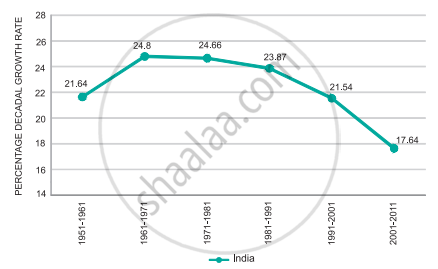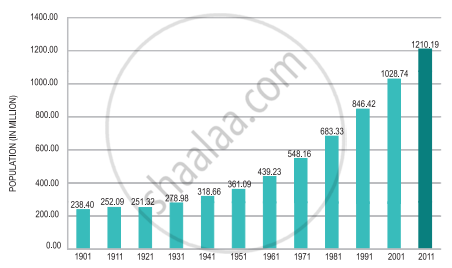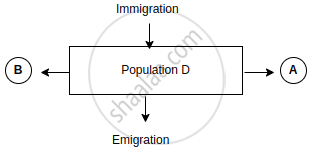Topics
Population : Part - 1
- Distribution of Population
- Patterns of Population Distribution in the World
- Geographical Factors Affecting Population Distribution
- Geographical Factors Affecting Population Distribution - Physical Factors
- Geographical Factors Affecting Population Distribution - Human Factors
- Components of Population Change
- Population Growth
- Population Growth and Explosion
Population : Part - 2
- Population Composition
- Migration
- Reasons for Migration
- Impact of Migration on Population
Human Settlements and Land Use
- Human Settlements
- Types of Settlement
- Types of Urban Settlements
- Land Use
- Land Use Classification
- Land Use in Rural Area
- Land Use in Urban Areas
- Rural-urban Fringe
- Suburbs
Primary Economic Activities
- Primary Occupations
- Hunting
- Gathering
- Lumbering
- Fishing
- Animal Husbandry (Livestock)
- Mining
- Agriculture
Secondary Economic Activities
- Introduction to Secondary Activities
- Physical Factors Affecting Secondary Economic Activities
- Economic Factors Affecting Secondary Economic Activities
- Political Factors Affecting Secondary Economic Activities
- Other Factors Affecting Secondary Economic Activities
- Footloose Industries
- Industrial Regions
- Major Industrial Regions of the World
- Classification of Industries
Tertiary Economic Activities
- Classification of Tertiary Economic Activities
- Transportation
- Trade
- Importance of Transport in Trade
- Tourism
- Communication
Region and Regional Development
- Regions
- Types of Regions
- Regional Development
- Factors Affecting Regional Development
- Physical Factors and Regional Development
- Population and Regional Development
- Land Use and Regional Development
- Primary, Secondary, and Tertiary Economic Activities and Regional Development
- Regional Imbalance
- Causes of Regional Imbalances in India
- Strategies to Reduce Regional Imbalance
Geography : Nature and Scope
- Nature of Geography as a Discipline
- Scope of Geography
- Latest Trends in Geography
- Introduction
- Factors Related to Population Growth
Notes
Population Growth
- The population is a dynamic phenomenon. The numbers, distribution, and composition of the population are constantly changing. This is the influence of the interaction of the three processes, namely − births, deaths, and migrations.
- Growth of population refers to the change in the number of inhabitants of a country/territory during a specific period of time, say during the last 10 years. Such a change can be expressed in two ways: in terms of absolute numbers and in terms of percentage change per year.
- The magnitude of the increase is measured by the absolute numbers added each year or decade. It is calculated by subtracting the earlier population (e.g., 2001) from the later population (e.g. that of 2011). It's known as the absolute increase.
- The rate or the pace of population increase is the other important aspect. It is studied in percent per annum, e.g. a rate of increase of 2 percent per annum means that in a given year, there was an increase of two persons for every 100 persons in the base population. This is referred to as the annual growth rate.
- The population of India has steadily increased from 361 million in 1951 to 1210 million in 2011.
| Year |
Total Population (in million) |
Absolute Increase in the Decade (in million) |
Annual Growth Rate (%) |
| 1951 | 361.0 | 42.43 | 1.25 |
| 1961 | 439.2 | 78.15 | 1.96 |
| 1971 | 548.2 | 108.92 | 2.20 |
| 1981 | 683.3 | 135.17 | 2.22 |
| 1991 | 846.4 | 163.09 | 2.16 |
| 2001 | 1028.7 | 182.32 | 1.97 |
| 2011 | 1210.6 | 181.46 | 1.64 |
| The Magnitude and Rate of India’s Population Growth | |||
|
India’s Population Growth Rates during 1951-2011 |
|
India’s Population 1901-2011 |
- The annual rate of population growth increased steadily, explaining the rapid increase in population from 361 million in 1951 to 683 million in 1981.
- However, the rate of growth has gradually declined since 1981. Birth rates fell speedily during this time period. Still, in the 1990s alone, 182 million people were added to the total population (an annual addition larger than ever before).
- It is critical to realize that India has a sizable population. When a low annual rate is applied to a large population, it yields a large absolute increase. When more than a billion people are added, even if at a slower rate, the total number of people added becomes enormous. The annual population increase in India is large enough to negate efforts to conserve natural resources and the environment.
- The declining trend of the growth rate is in fact a positive indicator of birth control efforts. Despite this, total population additions continue to rise, and India may overtake China to become the world's most populous country by 2045.
If you would like to contribute notes or other learning material, please submit them using the button below.



